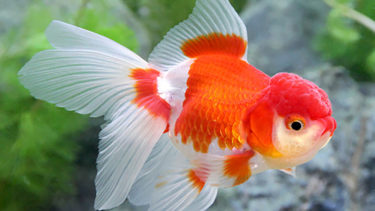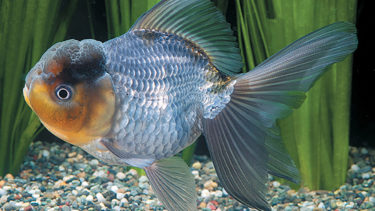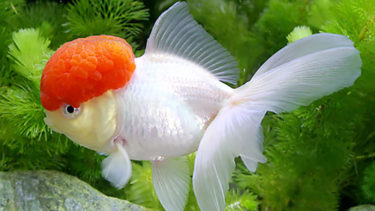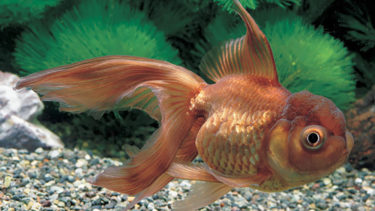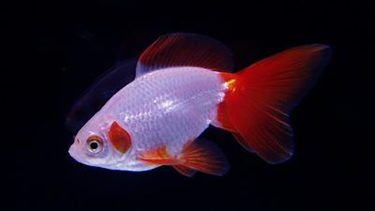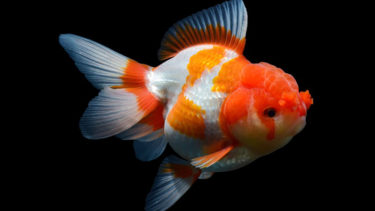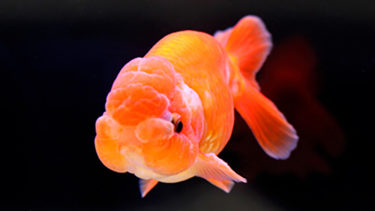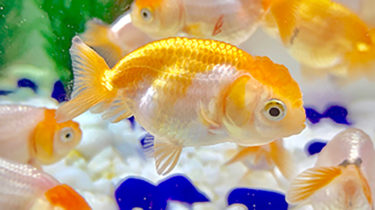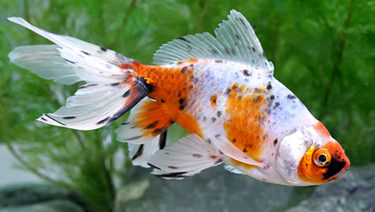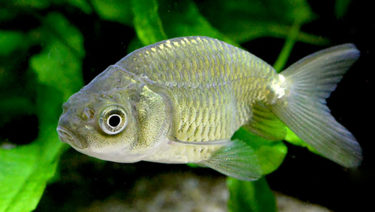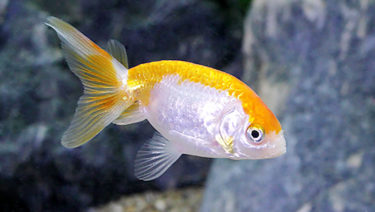The blue-bun fish is a goldfish with a blue-gray body color with bluish tints all over. It is no exaggeration to say that it is the one and only color in the goldfish world. In this article, I would like to explain in detail the characteristics of the blue-bun fish and how to keep it.
What is a blue-banded fish?
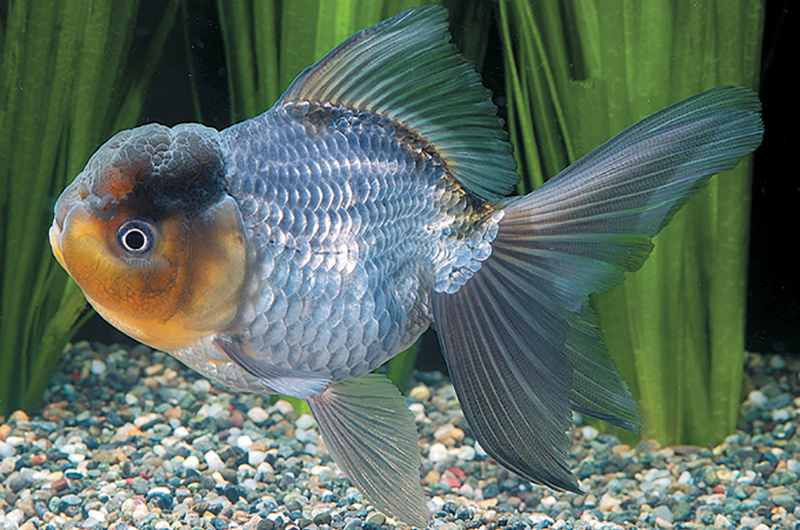
The blue-bun fish is a goldfish with a blue-gray body color with bluish tints all over. Its body shape and how to keep it are not much different from those of the regular Dutch lionhead.However, its bluish body color, which is unique in the goldfish world, is not inferior to other varieties and has a strong fan base.
The orchid lionhead is a goldfish characterized by its caudal fin and head mass. It is a goldfish that can be kept in a variety of ways depending on its body color, the size of the fleshy mass on its head, and the way its tail fin spreads. In this article, we would like to explain in detail the characteristics of the Woran Shishigashira and how to keep it. What is the Woran lionfish [...]
When choosing a goldfish, one of the most important factors to consider is the color of the body. In this article, we would like to introduce some of the most famous colors and their names. Body colorIn the world of goldfish, the body color of a goldfish has a name. In this article, I will explain two words that you often see in specialty stores [...].
Origin of blue-banded fish
The blue bunyos were originally known in China as aibunyos, or "indigo bunyos. When it was introduced to Japan, the name was changed to Aibungyo and has remained unchanged to this day. The origin of the name "Aibungyo" comes from the fact that the color of the Aibungyo is similar to indigo in China, and the shape of the fish when viewed from above, which gave it the name "Aibungyo.In China, the blue color recognized in Japan is described as indigo, and blue refers to yellowish green. In Japan, green insects are sometimes described as "caterpillars" and green apples as "green apples. Such a culture came from China. Therefore, the body color of the blue-spotted fish was recognized as indigo in China. After coming to Japan, the name of the blue-spotted fish was changed from "indigo" to "blue. The characteristic body color of the blue medaka is the result of the degeneration of yellow pigment. Other species, such as the blue killifish, have a similar mutation.
Many people think that goldfish are the goldfish that you see at fairs and festivals in the summer, and that there are many different kinds of goldfish. And it is no exaggeration to say that each type of goldfish has its own characteristics, and that is the best part about goldfish [...]
How to enjoy blue-banded fish

The best way to enjoy the blue-banded fish is to appreciate how beautifully the blue-gray color, its most distinctive feature, can be appreciated. For this purpose, we recommend viewing them from the side (side view) in an aquarium rather than from above (top view).By viewing them from the side, you can enjoy the beautiful blue-gray color reflected by LED or other light. In addition, you can also enjoy the mass of flesh on the head that develops as the fish grows, as in the case of the Wolan lion's head. If you enjoy the blue-gray coloration in a white basin, you will be able to enjoy the changes in the blue-gray coloration, which is difficult to appreciate in a side view, as the blue shiny part changes depending on the reflection of light.
Points to keep in mind when mixing swimmers
When mixing goldfish with other goldfish and other species, there is sometimes uncertainty as to what species is good and what species is not. First,There is no general prohibition against this or that when mixing goldfish with other species.Therefore, depending on the personality and environment of the goldfish you keep, even species that are said to be bad for each other may get along well with each other. However, there is also the matter of compatibility between goldfish. If you put incompatible goldfish together, there is a high possibility that they will fight or that only one of them will monopolize the food. However, as explained in the beginning, there is no prohibition for goldfish, so if you want to mix them, it may be OK to do so. Now, let us explain which goldfish are compatible with Japanese goldfish and which are not.
Compatible goldfish
The goldfish that work best with blue bony fish are Dutch type goldfish such as Azumanishiki (Azuma Nishiki) and Tanchou (Tanchou).The Dutch type goldfish is characterized by the fleshy mass on the head that develops as it grows and the beautiful tail fin that is as beautiful as the Ryukin type, so we recommend that you compare the growth changes of each variety.
About Us
About Tanden
About Dutch Type
Incompatible goldfish
Goldfish that are incompatible with the blue bony fish are Ranchu-type goldfish such as the Ranchu and Edo Nishiki.Many of the Ranchu-type goldfish are not good swimmers, and if they are mixed with the Orchid Lionhead, the Orchid Lionhead may take the Ranchu-type goldfish's food. If you do mix them with the Ranchu type goldfish, please be careful that the Ranchu type goldfish is able to eat the food.
About Ranchu
About Edo Nishiki
About Ranchu Type
What to keep in mind when keeping blue-banded fish
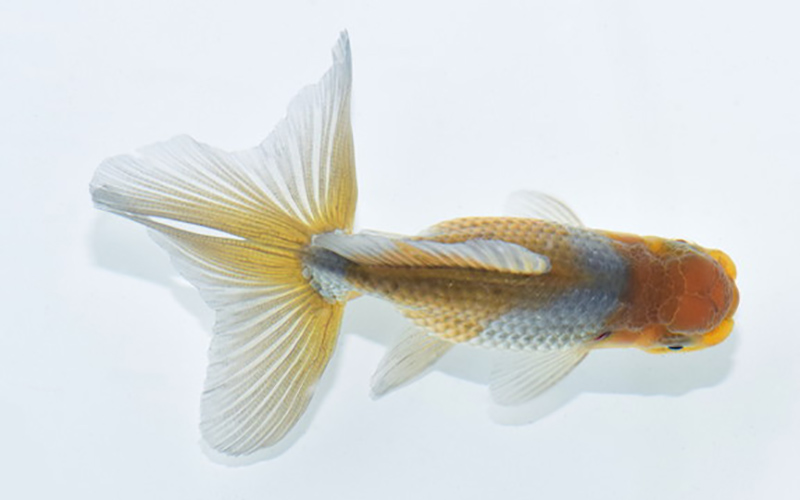
The blue-banded fish is not much different from the Dutch lionhead in terms of how it is kept and so on,When purchasing from specialty stores, some individuals may have a brown spot-like appearance that goes into the back or other parts of the blue-spotted fish. There is no need to worry about this, as it is just residual yellow pigment.Many people look at it as one of the points to choose Aobunkyo because they have different tastes, so it is recommended to observe this aspect as well. Compared to the Dutch Lion's Head and Azuma Nishiki, there are few opportunities to see Aobunkyo in person, so we recommend that you take a look at the beautiful blue-gray color when you are able to see them.


